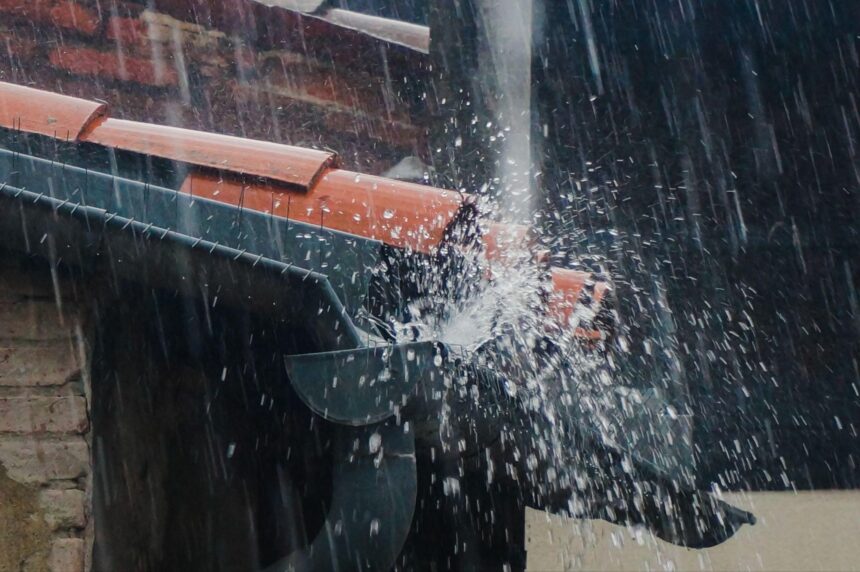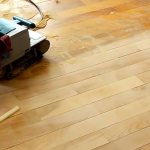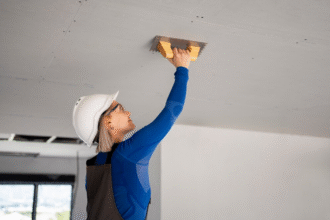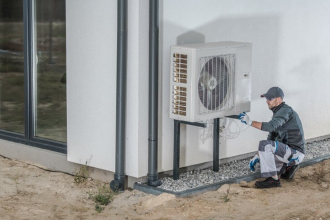Plumbing systems serve as crucial infrastructure in both residential and commercial properties, silently carrying out the vital task of water distribution and waste removal. However, when environmental factors such as rainfall come into play, the performance and integrity of these systems can be challenged. With the unpredictability of weather patterns, it’s increasingly important for property owners to understand how rainfall can impact plumbing systems to ensure proper maintenance and prevent potential damage.
Adverse weather conditions, particularly prolonged and heavy rainfall, can exert significant strain on plumbing systems. From increased water pressure in pipes to flooding and soil movement affecting underground pipes, each factor presents unique challenges. Consequently, the objective of this article is to delve into the effects of rainfall on plumbing systems and provide effective solutions to avoid and mitigate damage.
Understanding How Rainfall Affects Plumbing Systems
Rainfall, a natural hydrological phenomenon, involves the movement of water through the atmosphere before precipitating in various forms, most commonly as liquid rain. As rain falls, it interacts with infrastructure, particularly plumbing systems, affecting them in several ways.
Heavy rainfall can lead to an increase in water pressure within pipes. This heightened pressure, especially in older or poorly maintained systems, can cause pipes to burst or develop leaks. The sudden surge of water needing swift drainage taxes the existing infrastructure, risking damage if the system is unable to cope with the volume.
Flooding introduces another dimension to the problem, impacting not just the above-ground components but also underground pipes. Floods can cause soil movement, leading to pipe displacement or damage. The weight of the saturated ground can press down on pipes, potentially causing cracks or joint failures.
Typically, pipe bursts and leaks during heavy rainfall arise from an inability to efficiently handle the increased strain and volume. Overflowing water seeks new paths to flow, sometimes through weak spots in the plumbing system or via compromised waterproofing.
Identifying Vulnerable Areas in Plumbing During Heavy Rainfall
Certain areas within a plumbing system are more prone to damage from rainfall than others. Identifying these vulnerable spots can help prevent problems before they escalate.
Roof gutters and downspouts are often the first line of defence against rain. When these components become clogged or are improperly sized, they can overflow, leading to water pooling around the building’s foundation. This overflow can cascade into more severe drainage issues, potentially causing leaks or even foundational damage.
Basements are particularly susceptible to rainfall-induced plumbing issues. If not properly waterproofed, basements can experience significant problems with rainwater seepage. Excess moisture can introduce plumbing issues such as sump pump overuse or failure, leading to potential flooding.
External plumbing components, including yard drains and sewer lines, can suffer from poor landscape drainage. Inadequate run-off management can exert excess pressure on these elements, leading to issues like pipe blockages or even collapse.
Preventative Measures to Protect Plumbing from Rainfall Damage
While the effects of rainfall on plumbing systems can be destructive, several preventative measures can significantly reduce the risk of damage and maintenance headaches.
One of the most effective ways to safeguard plumbing systems is through regular inspection and maintenance. Routine checks can identify potential weaknesses in the system, such as deteriorating pipes or leaky joints, and allow for timely repairs.
Clearing and maintaining gutters and downspouts is essential for directing water away from a building effectively. Ensuring these are free from debris and correctly installed can prevent overflow and subsequent water damage to both the structure and the plumbing system.
Installing backflow prevention devices represents another vital strategic measure. These devices can be critical in protecting a property from flooding by stopping rainwater from reversing into the system.
Landscaping also plays a pivotal role in preventing plumbing problems associated with rainfall. Improving landscape drainage, for instance, reduces pressure on foundations and external plumbing. Tailoring the landscape to divert water away from the property can reduce the likelihood of basement flooding and soil saturation.

Solutions for Repairing Rainfall-Damaged Plumbing
A swift response is crucial when rainfall damages a plumbing system. Addressing problems quickly can prevent further deterioration and reduce repair costs.
The first step in managing rainfall-damaged plumbing involves assessing the extent of the damage comprehensively. Hiring professionals to conduct thorough plumbing inspections ensures that every aspect of the system is evaluated. They can provide expert guidance on repairs and long-term solutions to safeguard the system against future weather events.
Repairing visible damage, such as pipe bursts or leaks, should be a priority. Ignoring such issues can lead to worsened conditions, including structural damage or mould growth. Quick and effective repair work can limit these risks, preserving both the integrity of the plumbing system and the property overall.
For long-term protection against rainfall, investing in a lasting pipe fix can be beneficial. Reinforcing plumbing with durable materials and enhanced designs can help it withstand future environmental challenges.
Moreover, addressing groundwater or flooding concerns through the upgrading of sump pumps or adding additional drainage solutions can further safeguard the property.
Innovative Technologies and Future Trends in Stormwater Management
As the challenges posed by rainfall to plumbing systems increase, so too does the role of innovative technologies in addressing these issues. Emerging solutions are making it easier and more efficient to manage stormwater and protect plumbing infrastructure.
The integration of smart systems is among the leading trends in stormwater management. These technologies allow for early detection of potential plumbing issues, providing real-time data about system performance and potential vulnerabilities. Smart sensors and remote monitoring tools can alert property owners to blockages or unusual pressure changes, facilitating rapid responses.
Additionally, sustainable practices are being adopted to manage rainwater runoff. Green roofs, rain gardens, and permeable pavements are gaining popularity as eco-friendly solutions that naturally absorb and redirect water, reducing the burden on traditional plumbing systems.
Future trends in plumbing technology are expected to continue evolving, with increased focus on mitigating rainfall damage. Innovations such as self-healing pipes and enhanced materials are being developed to offer greater resilience and longevity.
Conclusion
Understanding the impact of rainfall on plumbing systems is crucial for both mitigating damage and ensuring their continued functionality. Regular maintenance, along with the adoption of suitable preventative measures, can avert potential issues before they develop into costly repairs.
Innovative technologies offer new ways to tackle stormwater challenges, providing both practical and sustainable solutions. By embracing these advancements, property owners can safeguard their plumbing infrastructure, enhancing its durability against environmental challenges.
Ultimately, ensuring the longevity and efficiency of plumbing systems in light of environmental stresses hinges on informed, proactive actions. Implementing timely repairs, conducting regular inspections, and embracing technological advancements can create a resilient defence against the unpredictable forces of nature.















